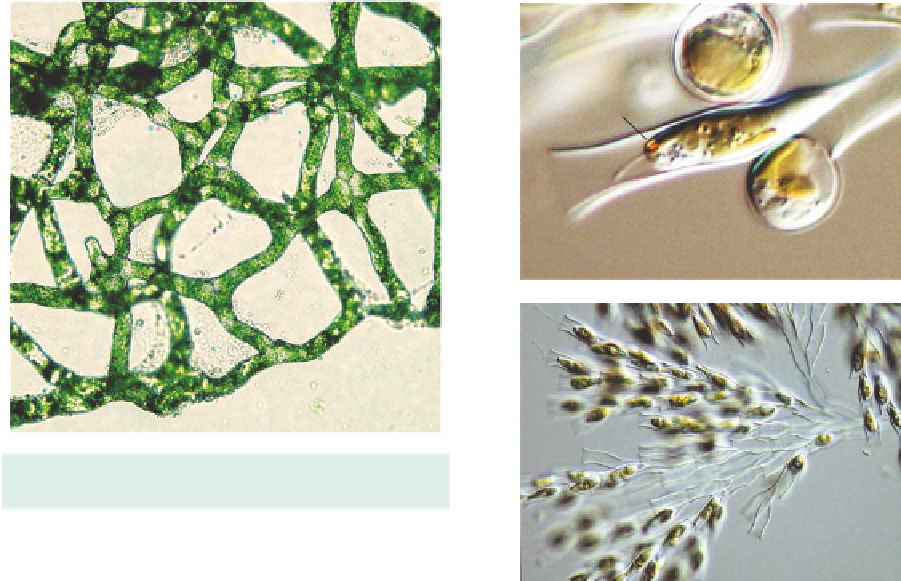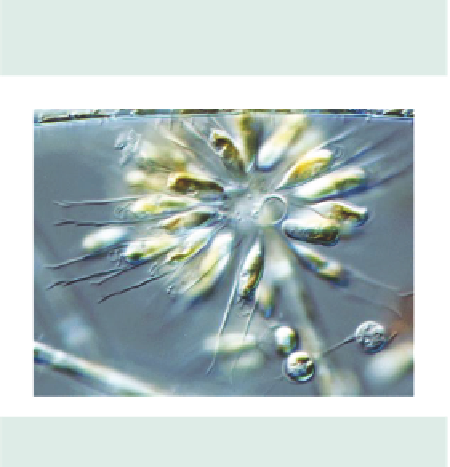Environmental Engineering Reference
In-Depth Information
e
f
c
10 μm
100 μm
Figure 4.1
Hydrodictyon
. Detail from edge of tubular
net showing 3D intercellular network.
Verywidelydistributedintheplanktonofponds
and lakes from nutrient-enriched to nutrient-
poor. It may be present in hard or soft waters.
Common in the plankton of cool waters and
in mountain regions. In temperate climates,
most abundant in summer. Has been associated
with odour problems in drinking water (Palmer,
1962). Chrysophyta. Plate II. Fig. 4.2a.
40 μm
Figure 4.2a
Dinobryon
. Top: Detail of single elon-
gate cell within a flask-shaped lorica, showing apical
flagellum (f), red eyespot (e) and live-brown chloroplast
(c). Bottom: Low-power view of free-floating dendroid
colony. Separate species. Reproduced with permission
from R. Matthews.
Epipyxis
, a closely-related genus, is a solitary
loricate or only forms small colonies. The lor-
ica consists of overlapping scales which are
sometimes difficult to see (may need phase-
contrast microscopy or staining). Epiphytic on
other algae. Plate II. Fig. 4.2b.
(b) Cells not in flask-shaped loricas . .......
8
8
(7) (a) Filaments without cross walls dividing
them into separate cells (siphonaceous or
coenocytic), cross walls only appearing when
reproductive structures produced. Irregularly
branched . .......................
Vaucheria
20 μm
Figure 4.2b
Epipyxis
. Colony of cells, with individ-
ual sedentary loricae radiating out from a central zone
of attachment. Reproduced with permission from R.
Matthews.
Filaments cylindrical, multinucleate - contain-
ing numerous disc- to oval-shaped chloroplasts,







Search WWH ::

Custom Search